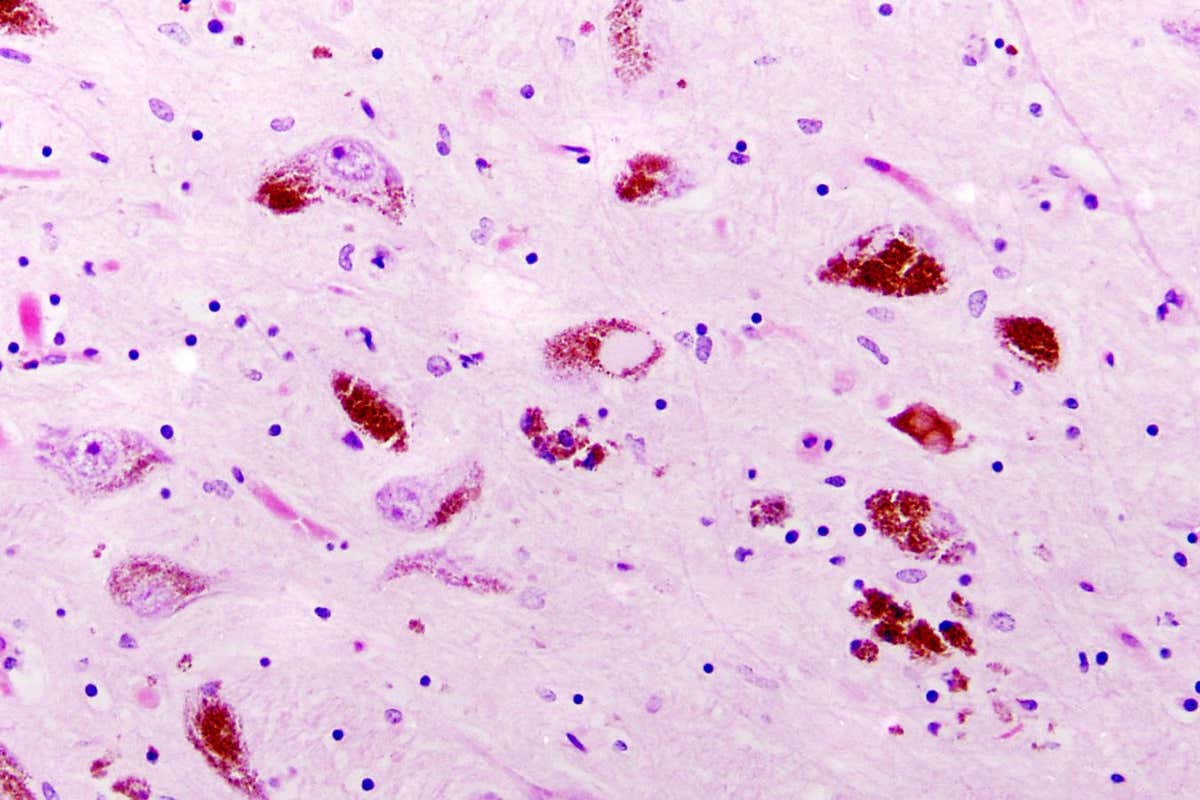[ad_1]

A sample of brain tissue from a person with Parkinson’s disease, showing clumps of protein known as Lewy bodies (red)
Cultura Creative Ltd / Alamy
High levels of a certain enzyme in the fluid around a person’s brain and spinal cord could be a sign that they have Parkinson’s disease – potentially enabling the condition to be diagnosed earlier.
Parkinsonian disorders are neurodegenerative conditions that affect 6 per cent of the global population and typically affect a person’s movement. They include Parkinson’s disease and a related condition called dementia with Lewy bodies (DLB).
These conditions are usually only diagnosed once symptoms, such as slow movement or stiff limbs, start to appear. But signs of degeneration in the nervous system can be present much earlier.
“It’s quite difficult, even for experienced clinicians, to diagnose individuals with a Parkinsonian disorder, especially in its early stages,” says Oskar Hansson at Lund University in Sweden. “So our main goal has been to identify a biomarker that can help with this.”
Hansson and his colleagues carried out tests on 81 people with Parkinson’s disease or DLB and 347 people who had no symptoms of the conditions. They collected each person’s cerebrospinal fluid, which bathes the brain and spinal cord, by inserting a needle into the spinal canal.
In participants who had Parkinson’s disease or DLB, the cerebrospinal fluid had much higher levels of DOPA decarboxylase – an enzyme that helps with the production of dopamine – compared with people without these conditions.
Among those who weren’t diagnosed with a Parkinsonian disorder, 35 were found to have elevated levels of DOPA decarboxylase in their cerebrospinal fluid. After three years of monitoring, the team found that 12 of these people went on to develop Parkinson’s or DLB.
The researchers then replicated the tests in another cohort of 94 people and found the same link between DOPA decarboxylase levels and Parkinsonian disorders. They also found the same correlation in samples of blood plasma from another 282 people.
“It’s still preliminary results; we need larger studies in different cohorts,” says Hansson. But if DOPA decarboxylase is validated as a biomarker for Parkinsonian disorders, it could be used to diagnose these conditions at an earlier stage with better accuracy.
There are currently no known ways to prevent or cure these conditions, but earlier diagnosis would mean people could access treatments for their symptoms sooner and have a better quality of life, says Hansson. Identifying biomarkers linked to these conditions may also help us develop treatments in the future, he says.
Topics:
[ad_2]
Source link




